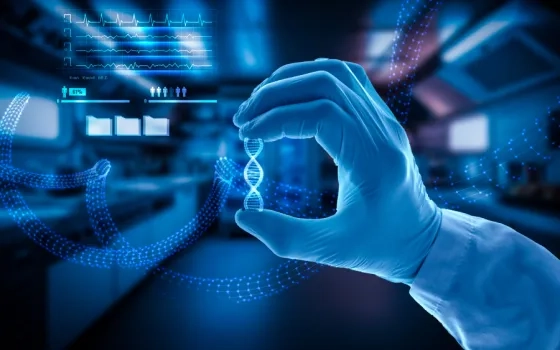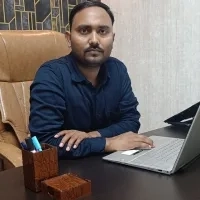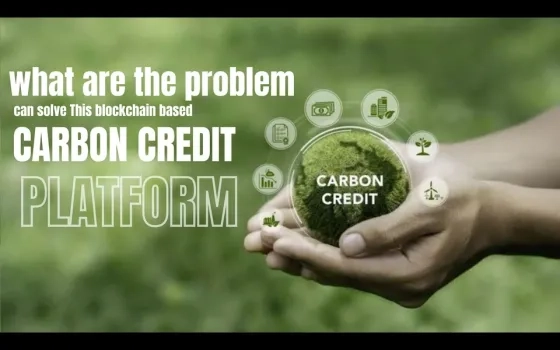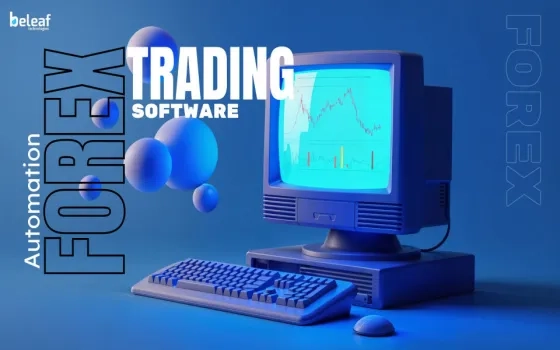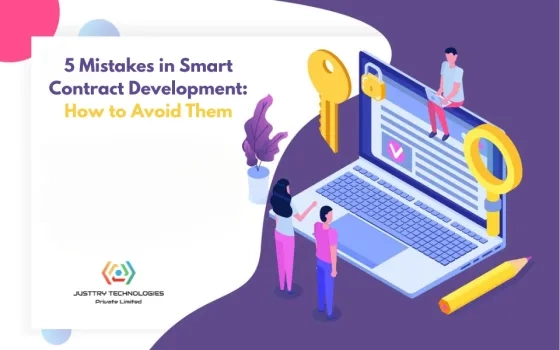Introduction
In the ever-evolving landscape of technology, the integration of blockchain and the Internet of Things (IoT) has emerged as a groundbreaking concept. The fusion of these two innovative technologies promises to revolutionize various industries, from supply chain management to healthcare. In this comprehensive guide, we will delve deep into the world of Blockchain Development for IoT Integration, exploring its potential, challenges, and real-world applications.
Understanding Blockchain and IoT
What is Blockchain?
Blockchain is a decentralized ledger technology, primarily associated with cryptocurrencies like Bitcoin. It's a sequential chain of blocks, each housing a collection of transactions. These blocks are securely linked using cryptography, guaranteeing the unchangeable nature and safety of the information held within them. Blockchain's design enhances transparency, reliability, and trust in various applications beyond cryptocurrency.
What is the Internet of Things (IoT)?
The Internet of Things refers to the vast network of interconnected physical devices and objects that can communicate and share data over the Internet. IoT devices include everything from smart thermostats and wearable devices to industrial sensors and autonomous vehicles.
The Synergy of Blockchain and IoT
The fusion of blockchain and the Internet of Things (IoT) yields a potent combination to tackle pivotal issues in the realm of connected devices. This synergy empowers:
Why Combine Blockchain and IoT?
The integration of blockchain and IoT brings forth a powerful synergy that addresses some critical challenges in the world of connected devices.
- Security Enhancement: IoT devices are vulnerable to cyberattacks due to their massive data exchange. Blockchain's decentralized nature and robust security measures can fortify these devices against threats.
- Data Integrity: Blockchain ensures the integrity of data generated by IoT devices. It verifies the authenticity of the data, making it trustworthy for decision-making processes.
- Smart Contracts: Smart contracts, automated self-executing agreements on the blockchain, can facilitate seamless interactions between IoT devices, enabling autonomous decision-making without human intervention.
- Transparent Supply Chain: Blockchain can provide end-to-end transparency in the supply chain by recording every step of the production and distribution process.
- Reduced Costs: By eliminating intermediaries and streamlining processes, blockchain can significantly reduce costs in IoT applications.
Blockchain Basics for IoT Developers
How Does Blockchain Work?
Before diving into a blockchain development company for IoT integration, it's essential to understand the fundamental workings of blockchain technology.
- Decentralization: Blockchain operates on a decentralized network of computers, known as nodes, which validate and record transactions. This eliminates the need for a central authority.
- Consensus Mechanisms: Blockchains use consensus mechanisms like Proof of Work (PoW) or Proof of Stake (PoS) to validate transactions and create new blocks.
- Cryptography: Cryptography is used to secure transactions and control access to data on the blockchain.
- Smart Contracts: Smart contracts are self-executing contracts with predefined rules and conditions that automate transactions when met.
Popular Blockchain Platforms
Several blockchain platforms cater to IoT integration, each with its unique features:
- Ethereum: Ethereum is renowned for its smart contract capabilities, enabling automated and trustless transactions in IoT ecosystems. Its robust network and extensive developer community make it a go-to choice for IoT projects seeking decentralized solutions.
- Hyperledger Fabric: Hyperledger Fabric offers a private and permissioned blockchain framework, ideal for enterprises implementing IoT applications. Its modular architecture and support for confidentiality and scalability make it a reliable choice for business-focused IoT projects.
- IOTA: IOTA stands out with its unique Tangle technology, designed to handle microtransactions and data integrity in IoT networks. Its feeless and scalable nature make it suitable for IoT deployments where cost-efficiency is crucial.
- Binance Smart Chain: Binance Smart Chain provides a fast and cost-effective option for IoT projects. Its compatibility with the Binance ecosystem and support for Ethereum-compatible smart contracts make it a viable choice for IoT developers aiming to leverage existing tools and resources.
Building Blockchain-Powered IoT Solutions
Setting Up the Development Environment
Before you can embark on developing blockchain-based IoT solutions, it's crucial to establish your development environment. Here's a step-by-step guide to help you get started:
- Choose a Blockchain Platform: Begin by selecting the blockchain platform that best suits your project's specific requirements. Popular options include Ethereum, Hyperledger Fabric, and IOTA, each offering unique features tailored to different use cases.
- Install Necessary Tools: Depending on the chosen blockchain platform, install the essential development tools and Software Development Kits (SDKs). These tools are crucial for coding, testing, and deploying your IoT applications on the blockchain.
- Hardware Setup: Acquire the IoT devices and sensors that will be integrated into your solution. Ensure that these devices are compatible with the blockchain platform you've chosen. Compatibility is essential for seamless data integration and communication between your IoT devices and the blockchain network.
Developing Smart Contracts
Smart contracts serve as the backbone of blockchain-powered IoT applications, facilitating automated and trustless interactions among devices. Here's a step-by-step guide to creating smart contracts:
- Choose a Programming Language: Depending on your chosen blockchain platform, select an appropriate programming language for smart contract development. Solidity is a commonly used language for Ethereum-based contracts, but different platforms may have their preferred languages.
- Code Your Smart Contract: Begin by writing the code for your smart contract. Define its logic, functions, and how it will interact with IoT devices. Ensure that your contract's code is clear, secure, and aligns with your project's requirements.
- Testing: Before deployment, it's essential to thoroughly test your smart contract. Utilize a testnet (a blockchain environment for testing) to identify and rectify any bugs, vulnerabilities, or logical issues. Rigorous testing helps ensure that your contract functions correctly and securely.
- Deployment: Once your smart contract has passed all tests and is deemed ready, deploy it on the mainnet (the live blockchain network) or a private blockchain network, depending on your project's scope and requirements. This step makes your smart contract accessible and operational for IoT devices and other participants on the network.
Integrating IoT Devices
Integrating IoT devices into your blockchain-powered application involves a series of essential steps:
- Connectivity: Establish a secure and reliable connection between your IoT devices and the blockchain network. This may require implementing Application Programming Interfaces (APIs), custom communication protocols, or IoT-specific middleware to enable seamless data exchange.
- Data Encryption: Implement robust encryption techniques to safeguard the integrity and confidentiality of data transmitted between IoT devices and the blockchain. Encryption ensures that sensitive information remains protected from unauthorized access or tampering during transmission.
- Data Validation: Ensure that data generated by IoT devices adheres to predefined rules and standards set by your smart contract. Data validation helps maintain data integrity on the blockchain and prevents erroneous or malicious data from compromising the network.
- Oracles: Bridge the gap between the off-chain world of IoT and the on-chain world of the blockchain by utilizing oracles or data feeds. Oracles act as intermediaries that fetch real-world data and feed it into the blockchain, enabling smart contracts to make informed decisions based on external information. This integration enhances the functionality and reliability of your IoT-enabled blockchain application.
Building the User Interface
The user interface serves as the primary channel for users to interact with your blockchain-powered IoT application. To ensure a seamless user experience, consider the following key considerations:
- User-Friendly Design: Design an intuitive and user-friendly interface that makes it easy for users to monitor and control their IoT devices. Prioritize simplicity and clarity in the layout and navigation to enhance user engagement.
- Real-Time Data: Display real-time data from IoT devices prominently on the interface. Providing users with up-to-the-minute information and insights about their connected devices enhances the utility of your application and helps users make informed decisions.
- Transaction Management: Implement transaction management features within the interface. Enable users to initiate transactions, execute commands, or interact with IoT devices directly through the user interface. Make sure these interactions are secure, reliable, and presented to users.
A well-crafted user interface not only enhances the accessibility of your blockchain-powered IoT application but also contributes significantly to the overall user satisfaction and adoption of your technology.
Security and Privacy
When integrating IoT with blockchain, prioritizing security and privacy is of utmost importance. Here are essential security measures to consider:
- Identity Management: Implement robust identity management for both IoT devices and users interacting with the blockchain. Ensure that each device and user has a unique and secure identity within the system. Utilize cryptographic techniques such as digital certificates to verify identities and maintain trust.
- Access Control: Define granular access control policies to restrict unauthorized access to sensitive data and system functionalities. Assign appropriate permissions based on roles and responsibilities, and regularly review and update access privileges as needed.
- Data Encryption: Employ encryption mechanisms for data protection, both in transit and at rest. Use strong encryption algorithms to safeguard data from potential breaches and eavesdropping. Encryption ensures that even if unauthorized parties gain access to data, it remains unintelligible to them.
- Regular Auditing: Conduct routine security audits and assessments to proactively identify vulnerabilities and weaknesses in your blockchain IoT system. Regular audits help in the early detection of potential threats and allow for timely mitigation measures. Make necessary security updates and improvements based on audit findings.
By implementing these security measures, you can enhance the overall safety and privacy of your blockchain-powered IoT integration, mitigating risks and ensuring the trustworthiness of your system for both IoT devices and users.
Real-World Applications
Blockchain development for IoT integration has a wide range of real-world applications, revolutionizing various industries.
Supply Chain Management
Blockchain ensures transparency and traceability in the supply chain by recording every step of the production and distribution process. This is particularly beneficial for industries like:
- Food and Beverage: Blockchain enables the tracking of food products from their origin to the consumer's table. It enhances safety by quickly identifying the source of contamination in the event of a food recall. Additionally, consumers can access information about the product's origin and quality, fostering trust in the supply chain.
- Pharmaceuticals: The pharmaceutical industry benefits from blockchain by verifying the authenticity of drugs. By recording the journey of medications from manufacturers to patients, blockchain helps combat counterfeit drugs, ensuring that patients receive safe and genuine medications.
- Logistics: Blockchain optimizes logistics operations by providing a transparent and immutable record of goods movement. It streamlines the supply chain by reducing delays, enhancing route optimization, and minimizing errors in shipping and delivery processes.
Healthcare
The convergence of blockchain and IoT technologies has given rise to innovative solutions in the healthcare sector:
- Patient Data Management: Blockchain enhances patient data management by enabling secure and interoperable sharing of medical records among healthcare providers. Patients' health information can be stored on a blockchain, ensuring data integrity, security, and accessibility while maintaining strict privacy controls. This empowers patients to have greater control over their health data and grants healthcare professionals quick access to critical information for better diagnosis and treatment.
- Drug Traceability: Blockchain technology is utilized to ensure the authenticity and safety of pharmaceuticals throughout the supply chain. By recording each step of the drug manufacturing, distribution, and dispensing process on an immutable blockchain ledger, it becomes possible to trace the origin and handling of medications. This significantly reduces the risk of counterfeit drugs entering the market, safeguarding patient health.
These applications of blockchain and IoT in healthcare demonstrate the potential to improve data management, patient care, and drug safety within the industry, ultimately benefiting both healthcare providers and patients.
Smart Cities
The integration of blockchain and IoT technologies is pivotal in the development of smart cities, bringing about advancements in:
- Traffic Management: Blockchain and IoT sensors work together to optimize traffic flow and reduce congestion. Real-time data from traffic cameras, sensors, and connected vehicles is collected and analyzed. Smart contracts on the blockchain can automatically adjust traffic signals, reroute vehicles, or provide real-time traffic updates to commuters, ultimately improving overall traffic efficiency and reducing commute times.
- Energy Management: Smart cities utilize blockchain and IoT to efficiently manage energy resources. IoT devices monitor energy consumption in real-time, enabling data-driven decisions. Blockchain helps in securely recording energy transactions and optimizing energy distribution. This leads to reduced energy wastage, lower costs, and a more sustainable energy ecosystem within the city.
These applications demonstrate how the integration of blockchain and IoT technologies is helping create smarter and more efficient cities, enhancing the quality of life for residents while promoting sustainability and resource optimization.
Agriculture
The agriculture industry harnesses the power of blockchain and IoT technologies in the following key areas:
- Crop Monitoring: IoT sensors are employed for real-time monitoring of crucial agricultural factors such as soil conditions, weather patterns, and crop health. These sensors collect data and transmit it to a central system, enabling farmers to make informed decisions regarding irrigation, fertilization, and pest control. By integrating blockchain, the data generated can be securely recorded, ensuring its accuracy and traceability. This data-driven approach optimizes farming practices, leading to increased crop yields and sustainability.
- Supply Chain Tracking: Blockchain technology is used to establish end-to-end transparency and traceability in the agricultural supply chain. From the farm to the consumer's table, each step of the journey can be recorded on an immutable blockchain ledger. This ensures that the freshness, quality, and authenticity of agricultural products are maintained. Consumers can easily verify the origin of their food, fostering trust and promoting safety in the supply chain.
The application of blockchain and IoT in agriculture contributes to more efficient and sustainable farming practices while ensuring that consumers have access to safe and high-quality agricultural products.
Challenges and Future Prospects
Challenges in Blockchain Development for IoT Integration
The integration of blockchain and IoT presents significant potential, but it also presents several challenges:
- Scalability: Scaling blockchain networks to handle the sheer volume of IoT devices and their data is a substantial challenge. As IoT deployments grow, blockchain platforms must find efficient ways to process and validate transactions promptly.
- Interoperability: Achieving interoperability between diverse IoT devices and various blockchain platforms is a complex endeavor. Developing standardized protocols and communication frameworks is essential to ensure seamless interactions across the IoT ecosystem.
- Cost: Implementing blockchain solutions can be cost-prohibitive, particularly for smaller-scale IoT projects. Balancing the potential benefits of enhanced security and trust with the initial investment required can be a hurdle for some organizations.
- Regulatory Compliance: Navigating the regulatory landscape, especially in highly regulated sectors like healthcare and finance, poses challenges. Compliance with data privacy and security regulations, such as GDPR or HIPAA, is critical and can be demanding.
Future Prospects
Despite the challenges, the future of blockchain development for IoT integration looks promising:
- Improved Scalability: Continuous research and development efforts are focused on increasing blockchain scalability. Technologies such as sharding and layer-2 solutions aim to address the scalability problem, enabling blockchain networks to handle IoT data more effectively.
- Standardization: Industry-wide efforts to establish standards and interoperability protocols will facilitate seamless communication between IoT devices and various blockchain platforms, unlocking new possibilities for innovation.
- Cost Reduction: As blockchain technology matures, costs are expected to decrease. Additionally, cloud-based blockchain solutions may provide cost-effective options for IoT integration, making it more accessible to a broader range of applications.
- Regulatory Clarity: Regulatory bodies are gradually adapting to the challenges posed by blockchain and IoT. Clearer guidelines and frameworks are expected to emerge, providing more certainty and guidance for organizations operating in regulated sectors.
While blockchain and IoT integration face challenges, ongoing advancements, and collaborative efforts are paving the way for a future where the potential benefits of this synergy can be fully realized across various industries.
Conclusion
The integration of blockchain and IoT represents a groundbreaking frontier in technology. It has the potential to transform industries, enhance security, and streamline processes across the board. While there are challenges to overcome, the prospects are promising. As developers and innovators continue to push the boundaries of what's possible, the world of Blockchain Development for IoT Integration is one filled with endless opportunities and exciting possibilities. So, whether you're building smart cities, revolutionizing healthcare, or optimizing supply chains, the synergy of blockchain and IoT awaits your creative genius.



